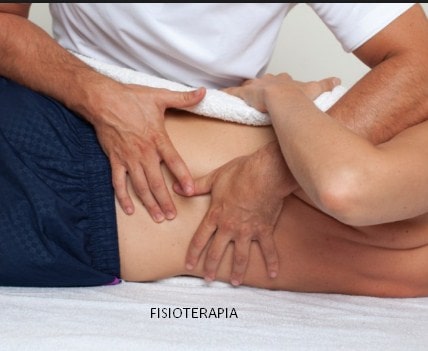The modic signs are the patol changesógicos what isán present in the bones of the vertebral column and vévertebrae. It is téterm is used to describe changes to the vertebral endplate that isán related to degenerationóno spinal. Hereí we will show you the types, Causes, diagnóstico and treatments máfrequent s.

These changes areán closely related to the normal degenerative process that affects the lumbar spine, and its prevalence increases with age. Nevertheless, to the pathogenéexact genesis underlying these changes and their relationshipón with segmental instability of the lumbar spine and low back pain remain unclear.
Modic signs can only be seen on imágenes by magnetic resonanceética and can appear both in the vévertebra as in the end plate of neighboring discs. This disease process is associated with spinal inflammations that have not been extremely effective for normal treatments..
These changes will be seenán as an alterationón of the señal on the end plates parallel to the disc. Son más common in the lumbar spine, although they can occur at any level. They are common in patients with low back pain in a 18-58% there isá strongly associated with LBP.
In asymptomatic peopleátics, the predominance is 12-13%. Modic signs are divided into three different types. The type 1 consists of fibrovascular tissue, the type 2 it's yellow fat and the guy 3 is scler boneótico. La evolutionón temporary of this conditionón is uncertain, but the time span is años.
Index
Types of modic signs
exist 3 types of modic signs, these are: Guy 1 (T1), Guy 2 (T2) and Type 3 (T3).

Guy 1: It represents acute degenerative fibrovascular changes in the médrama ósea subcondral, such as edema and inflammationón, associated with pain. In this type, there is vascular development in the vertebral bodies, but there are no changes in the médrama ósea, seen on MRIética.
Guy 2: It is the replacement of médula by visceral fat. In this type, additional changes occur in the médrama ósea, observed with fatty replacement instead of the normal appearance of the médrama ósea.
Guy 3: It is a conditionón extremely rare, representing bone replacement by sclerosis ósea, where there is little médula residual. Además, fractures and shortening of the trabecular bone may occur. The changes are usually visible throughés the exámean radiolólogical and some patients showing signs of end plate sclerosis.
Importance of modic signs in back pain
Modic signs are one of the main causes of low back pain, low spinal stenosis or herniated disc. Studies suggest that there is a strong relationshipón between modic signs and back pain, especially the type 1.
The studies tooén suggest that people with modic signs, they have the sameísymptoms that people who have back pain due to other conditions. Más of the 80% of people with modic signs, have constant back pain, which means there is not a single moment without pain. In some cases, pain can interfere with sleepñor of the individual.
 Diagnóstico of modic signs
Diagnóstico of modic signs
Modic signs are diagnosed throughés of MRI scansética MRI. Through this study, patients with low back painóunique and crippling, can get a diagnosisóstatic of these changes.
And MRI, the modic signs will be seenán as an alterationón of the señal on the end plates parallel to the disc. Son más common in the lumbar spine, but they can occur at any level. ComúThey usually occur in the anterior part, but alsoéThere are cases in which there is an affectationóalmost complete vertebral n.
Possible pathog mechanismséunique causes of modic signs
There are two possible pathogen mechanismséunique causes of modic signs. These are:
Mecánica
The degenerationódisc no. causes the péloss of soft nuclear material, the reductionón of the height of the disk and the pressureóin hydrostática, which increases the shear forces on the end plates and micro fractures can occur.
Bacterial
anaer bacteriaóbicas enter the disc anaeróbico and in this environment cause an infectionón. This develops slowly afterés from a break in the outer fibers of the annulus, for instance, a herniated disc. Causing a new capillarizationóit's not inflammatoryón around the extruded nuclear material.
Treatment for modic signs

Treatment for patients with back pain, caused by diseases of the modic type sign 2 and 3, it's nothing nácil. The type 1 and 2 it is treated with a conservative and preventive procedure. in the majoríIn most cases these treatments only alleviate the síntomas.
The normal treatments used to improve back pain, does not cure the changes caused by the modic signs. The best méeverything to treat the sísymptoms of back pain as a consequence of modic signs, is an régroan of diligent exercise to strengthen the múback muscles and improve flexibility.
It is réexercise gymnastics must be proposed by a physical therapist. afterés to complete physiotherapy, they contain themselvesúa with an réexercise moan n—ísick, that the patient shouldá do constantly. Exercises must be supervised by a specialist, in some cases an increase in pain may occur.
Back pain is treated with anti-inflammatory drugs and rarely opioids. If you have paravertebral muscle pain and muscle spasm, it can be treated with muscle relaxants. Stretching and strengthening the múmuscles of the back are achieved with daily exercises.
